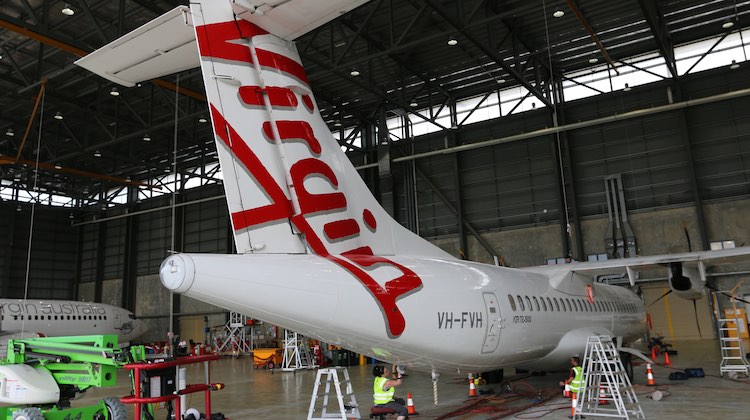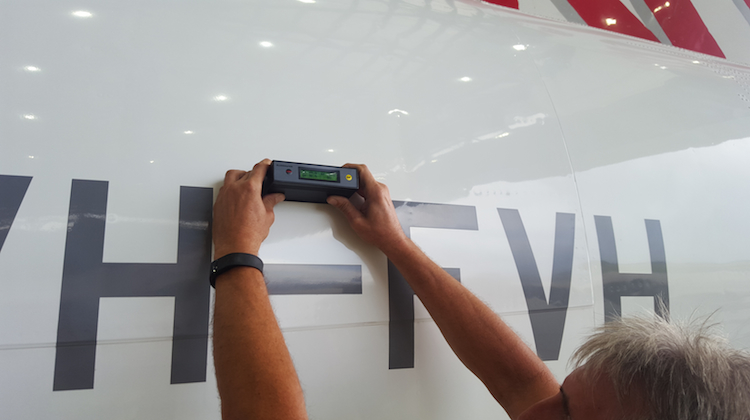
Virgin Australia’s ATR 72-500/600 turboprop fleet of 14 aircraft will carry a protective exterior coating from Permagard Australia.
The work to clean, prepare and apply the clear polymer seal to the aircraft exterior takes two days per frame and is being conducted at Virgin’s Brisbane engineering facility, Permagard said in a statement.
The contract to work on Virgin’s turboprops extends Permagard’s relationship with the Australian carrier, which began in 2007 when a Virgin Blue Boeing 737 was first aircraft to undergo the procedure.
Since then, Permagard has applied its protective coating, which filters out ultra violet light and protects aircraft paint from oxidising and fading, to Virgin’s 737s, Airbus A330s and Embraer E190 jets. Once the ATRs are completed, about 120 Virgin aircraft will have the coating, which also helps reduce cleaning time and cuts down the number of times an aircraft needs to be washed.
Permagard, which is headquartered in France, also works on airlines such as Qantas, Jetstar, Regional Express and QantasLink, as well as Air New Zealand and its subsidiaries.

Meanwhile, in April, Permagard said it had gained certification to apply an invisible, non-toxic “antimicrobial shield” to the interiors of Boeing and Airbus aircraft.
The antimicrobial shield, which was developed by New Zealand-based Zoono Industries, takes about 45 minutes to apply to an empty aircraft interior, including the air conditioning ducts and filters. It is reapplied every 45 days.
This invisible coating bonds with all surfaces forming a dense, “microscopic shield or layer of sharp molecular pins”, Permagard said, which was “unaffected by regular aircraft cleaning processes”.
When a virus or pathogen makes contact with the layer, the cell walls of pathogen microbes are pierced and ruptured, disintegrating the microbe.
“It is a safe, highly effective process similar to antimicrobial treatments now used in hospitals and food processing plants,” Permagard group director Chris Plastow said in a statement.
“Airlines and air travellers have witnessed the emergence and worldwide impact of SARS (Severe Acute Respiratory Syndrome), Bird Flu (Avian Flu) Swine Flu (H1N1), Ebola and the continuing prevalence of other serious diseases such as Zika Virus and Norovirus.
“Antimicrobial treatment of public transport equipment is a new and important focus for airlines, railway operators, bus and shipping lines as well as border control organisations and public health authorities.
“The solution requires an approach of continual improvement, application of new science and technology and a willingness by transport operators to invest in their duty of care.”
Currently, modern aircraft air conditioning systems frequently filter and recirculate cabin air during the flight, while alcohol-based disinfectants are often used to clean surfaces when on the ground.















